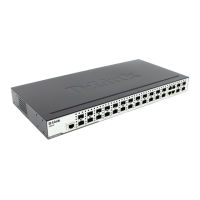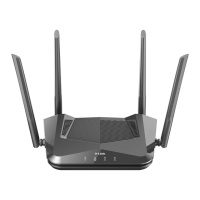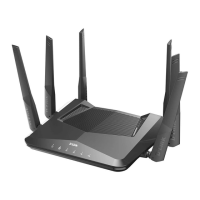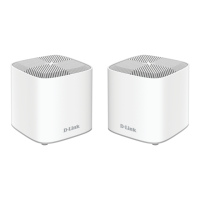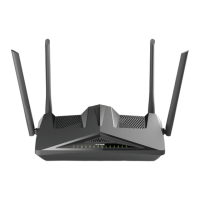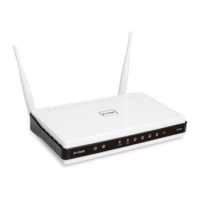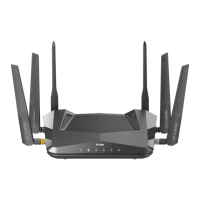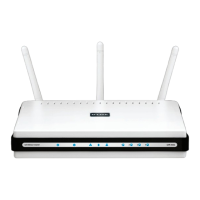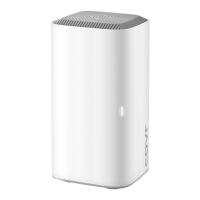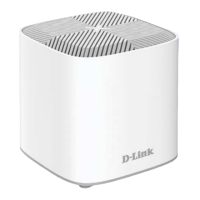xStack® DES-3200 Series Layer 2 Managed Fast Ethernet Switch
90
The fields that can be configured are described below:
Parameter Description
Select the a range of ports to be configured.
Use the drop-down menu to enable or disable the filtering function
Tick to enable or disable filtering IGMP Query protocol packets.
Tick to enable or disable filtering DVMRP protocol packets.
Tick to enable or disable filtering PIM protocol packets.
Tick to enable or disable filtering OSPF protocol packets.
Tick to enable or disable filtering RIP protocol packets.
Tick to enable or disable filtering VRRP protocol packets.
Tick to enable or disable filtering all layer 3 control packets.
Click the Apply button to accept the changes made.
MLD Snooping
Multicast Listener Discovery (MLD) Snooping is an IPv6 function used similarly to IGMP snooping in IPv4. It is used
to discover ports on a VLAN that are requesting multicast data. Instead of flooding all ports on a selected VLAN
with multicast traffic, MLD snooping will only forward multicast data to ports that wish to receive this data through
the use of queries and reports produced by the requesting ports and the source of the multicast traffic.
MLD snooping is accomplished through the examination of the layer 3 part of an MLD control packet transferred
between end nodes and a MLD router. When the Switch discovers that this route is requesting multicast traffic, it
adds the port directly attached to it into the correct IPv6 multicast table, and begins the process of forwarding
multicast traffic to that port. This entry in the multicast routing table records the port, the VLAN ID, and the
associated multicast IPv6 multicast group address, and then considers this port to be an active listening port. The
active listening ports are the only ones to receive multicast group data.
MLD Control Messages
Three types of messages are transferred between devices using MLD snooping. These three messages are all
defined by four ICMPv6 packet headers, labeled 130, 131, 132, and 143.
1. Multicast Listener Query – Similar to the IGMPv2 Host Membership Query for IPv4, and labeled as 130 in
the ICMPv6 packet header, this message is sent by the router to ask if any link is requesting multicast data.
There are two types of MLD query messages emitted by the router. The General Query is used to advertise
all multicast addresses that are ready to send multicast data to all listening ports, and the Multicast Specific
query, which advertises a specific multicast address that is also ready. These two types of messages are
distinguished by a multicast destination address located in the IPv6 header and a multicast address in the
Multicast Listener Query Message.
2. Multicast Listener Report, Version 1 – Comparable to the Host Membership Report in IGMPv2, and
labeled as 131 in the ICMP packet header, this message is sent by the listening port to the Switch stating
that it is interested in receiving multicast data from a multicast address in response to the Multicast Listener
Query message.
3. Multicast Listener Done – Akin to the Leave Group Message in IGMPv2, and labeled as 132 in the
ICMPv6 packet header, this message is sent by the multicast listening port stating that it is no longer
interested in receiving multicast data from a specific multicast group address, therefore stating that it is
“done” with the multicast data from this address. Once this message is received by the Switch, it will no
longer forward multicast traffic from a specific multicast group address to this listening port.
4. Multicast Listener Report, Version 2 - Comparable to the Host Membership Report in IGMPv3, and
labeled as 143 in the ICMP packet header, this message is sent by the listening port to the Switch stating
that it is interested in receiving multicast data from a multicast address in response to the Multicast Listener
Query message.
Data Driven Learning
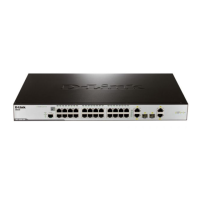
